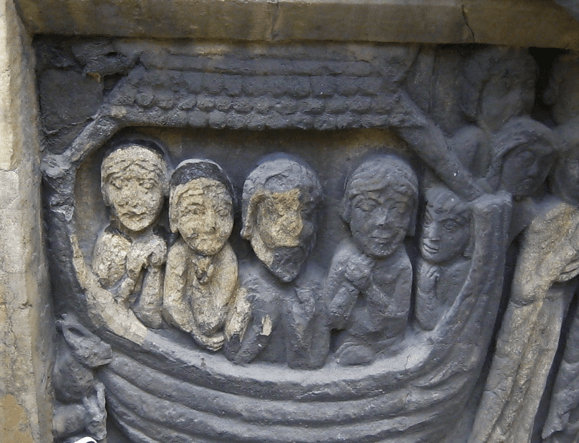By Liam Robinson, first-year undergraduate, Conservation of Cultural Heritage
The Lincoln Cathedral Connected project is currently underway, improving the Cathedral’s setting and visitor experience by offering more engaging and dynamic spaces. The project is supported by a £12.4 million Heritage Lottery Fund Grant and £3.6 million of private funding and is scheduled to last for five years.
As part of the project, the iconic west front, including the Romanesque frieze, is undergoing conservation work. The frieze which dates to between 1123 and 1148 has previously been covered to protect it from environmental damage and has not been actively worked on since 1960.

The project currently employs five conservators who are working to clean and consolidate the historic carvings on the west front. They aim to complete this work by 2021. The stone work will subsequently be monitored every five years due to its historic significance. The current level of work may not be repeated for another hundred years. The conservators are not only protecting and cleaning the existing carvings, they are also carrying out research and revealing new information about the history and construction of the west front. Evidence of a polychrome paint scheme has been found on some of the stonework. Using analysis of these paint samples, it may be possible to re-construct a view of the vivid colour scheme which previously existed.
Students from the University of Lincoln Conservation Department recently visited the site. This gave them a rare opportunity to see the stone work at close range and understand more about the conservation currently taking place. Twelve students from the BA and Graduate Diploma courses ascended the scaffolding, guided by Lincoln Cathedral Head Conservator Jane Cowan.


The visit allowed the students to observe examples of degraded stone and experience the challenges posed in conserving this type of building. For example, the scaffolding had to be specifically designed for the project and involved a high level of engineering to provide a safe working space that would not damage the building or surrounding grounds. The students also got to experience the working conditions of stone conservators, gaining a great insight into the practicalities of working on this type of project.
The techniques being practiced included gel cleaning, high pressure water cleaning, and laser cleaning. The latter was particularly impressive for its results and controllability (Fig1). As can be seen in the photographs, the stone work was thickly covered with dirt and environmental pollutants which were accelerating the degradation of the stone. Removing these layers helps to stabilise and slow any degradation, acting to preserve the carvings as well as improve their appearance.
The visit represented a valuable opportunity for students to observe internationally-important conservation work being undertaken in Lincoln. They were able to compare unrestored, partially restored, and completed work and evaluate different stone cleaning techniques. It was also a very rare chance to get a close view of the 12th Century Romanesque frieze in a way that few others will.
Many thanks to Jane Cowan – Lincoln Cathedral Head Conservator for providing such an insightful and important tour.
For more information on The Lincoln Cathedral Connected Project please visit https://lincolncathedral.com/history-conservation/connected/